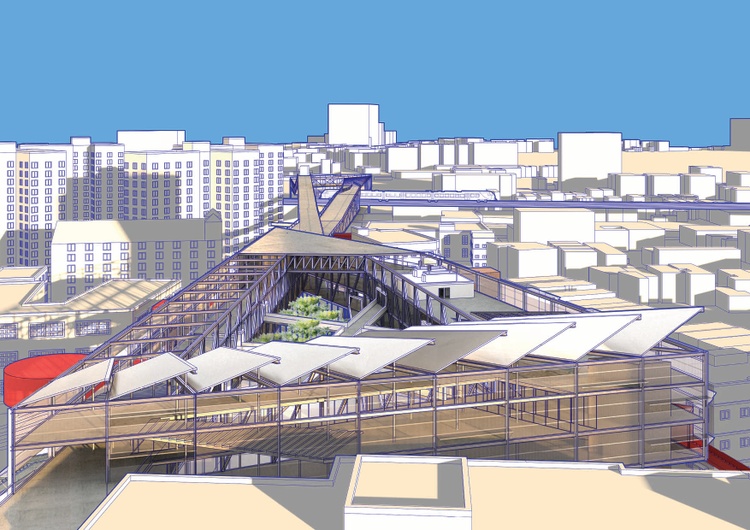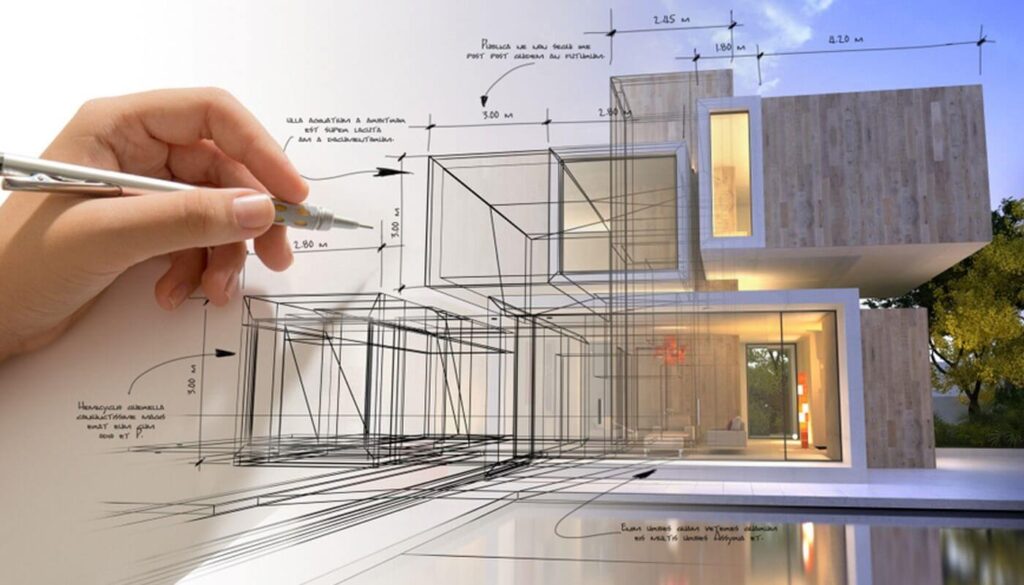Transforming Areas: The Vision of CDA Architects for Modern Living
Transforming Areas: The Vision of CDA Architects for Modern Living
Blog Article
The Important Function of an Architect in Shaping Lasting Urban Environments for Future Generations
The duty of an architect in crafting lasting metropolitan settings is significantly essential in responding to the challenges of environment change and urbanization. By seamlessly incorporating eco-friendly concepts into their designs, architects not just boost the aesthetic and functional high quality of metropolitan spaces but additionally address pressing issues such as energy efficiency and social equity.
Recognizing Lasting Urban Design
Lasting metropolitan layout incorporates environmental principles with city planning to create settings that are not just habitable yet likewise resilient. This method emphasizes the relevance of incorporating all-natural systems into the city material, making sure that development satisfies the needs of the here and now without compromising the ability of future generations to fulfill their own demands. Crucial element of sustainable city layout consist of efficient land use, the promo of biodiversity, and the integration of green areas, every one of which add to improved lifestyle for homeowners.
In addition, sustainable metropolitan design focuses on the decrease of the city heat island impact, boosted air quality, and effective stormwater monitoring. It encourages using renewable energies and energy-efficient building techniques, which dramatically reduced carbon impacts. Lasting metropolitan layout fosters social equity by producing obtainable public spaces and promoting mixed-use advancements that cater to varied populaces.
Via thoughtful preparation and cutting-edge design approaches, sustainable urban atmospheres can improve neighborhood durability against climate modification while promoting financial growth. This holistic approach not only addresses immediate urban challenges but also lays the groundwork for healthier, more sustainable cities for generations ahead.
Trick Duties of Engineers
Designers play an essential duty fit sustainable metropolitan atmospheres by converting layout principles into substantial frameworks and spaces. Their responsibilities include a wide variety of activities that contribute to the general success of urban layout jobs.
Primarily, designers carry out complete site analyses to comprehend the environmental, social, and cultural context of their projects. This foundational expertise notifies their design choices, guaranteeing that buildings harmonize with their environments. They also take part in collective procedures with stakeholders, consisting of city organizers, engineers, and the community, promoting an inclusive strategy to metropolitan development.
Furthermore, architects are charged with creating layouts that enhance energy effectiveness, resource conservation, and capability. They must follow neighborhood zoning laws, constructing codes, and sustainability accreditations, making sure conformity while pressing the borders of technology.
Furthermore, engineers are accountable for taking care of the design process, collaborating with various experts throughout the building and construction phase to make certain that the vision is realized precisely (cda architects). Inevitably, their role is not solely regarding aesthetic appeals; it is about creating durable, flexible areas that boost the quality of life for present and future generations, laying the foundation for lasting urban living
Innovative Products and Techniques

In addition, improvements in innovation have caused the development of high-performance products, such as shielded concrete types (ICFs) and photovoltaic or pv glass, which add to energy preservation and harness renewable resource. Strategies such as easy solar style and eco-friendly roofs better exemplify how style can integrate with natural systems, reducing dependence on synthetic heating & cooling.
Additionally, the combination of clever materials, which adjust to environmental adjustments, uses appealing methods for enhancing structure performance. These products can reply to temperature level changes or dampness levels, enhancing convenience and sustainability.
Eventually, the critical choice and application of cutting-edge materials and methods empower designers to create metropolitan spaces that are not just useful and cosmetically pleasing but additionally resilient and ecologically liable, guaranteeing a lasting future for generations to come. cda architects.
Area Involvement and Collaboration
The success of innovative products and strategies in lasting metropolitan architecture is considerably enhanced by energetic community engagement and cooperation. Engineers need to acknowledge that the built atmosphere greatly influences the lives of local residents, making it vital to involve them in the design procedure. Involving the community cultivates a feeling of ownership and accountability, ensuring that growths not only meet visual and functional needs yet likewise mirror the worths and ambitions of those who occupy them.

Effective community engagement likewise assists in prioritizing social equity within city development. By thinking about the voices of marginalized populations, designers can develop spaces that are inclusive and equitable. This way, community interaction and partnership come to be integral to attaining truly sustainable city settings that offer the needs of current and future generations.
Future Fads in Lasting Style
An arising concentrate on adaptive reuse and circular economic climate principles is set to redefine the landscape of lasting style. As cities face increasing populace thickness and environmental difficulties, architects are increasingly turning to strategies that maximize existing frameworks as opposed to going after new builds. This approach not only maintains cultural heritage yet additionally dramatically lowers resource intake and waste.
Furthermore, developments in innovation are shaping future fads in lasting architecture. The assimilation you can try this out of clever products and building systems enables real-time power administration, enhancing performance and minimizing carbon footprints. Innovations such as environment-friendly roof coverings, living walls, and energy-generating exteriors are ending up being basic practices, better promoting ecological balance within city atmospheres.
Furthermore, a change towards biophilic layout is acquiring grip, highlighting the link between nature and human well-being. By integrating natural aspects, engineers produce rooms that promote mental health and wellness while advertising biodiversity.
Conclusion
Finally, architects are essential in advancing lasting urban atmospheres via their know-how in design, ingenious products, and community interaction. By focusing on power efficiency and resource preservation, these professionals add to the development of durable city rooms that fulfill the needs of existing and future why not try these out generations. The assimilation of ecological principles not only improves livability but additionally cultivates social equity, guaranteeing advancements reverberate with the worths and desires of the neighborhoods they offer.
Report this page